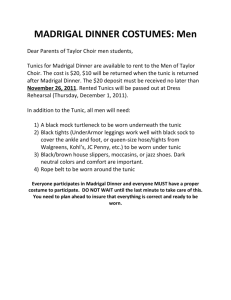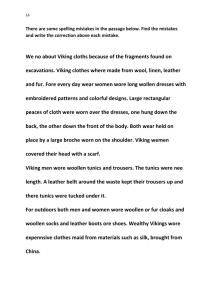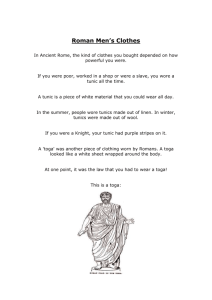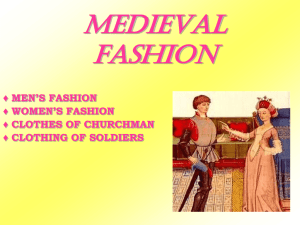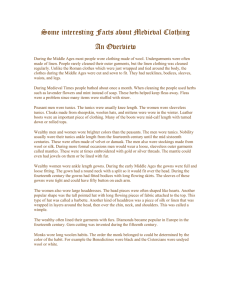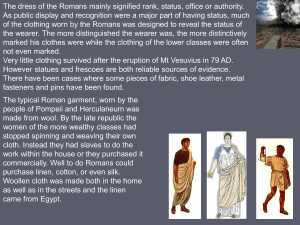Ancient World clothing styles
advertisement
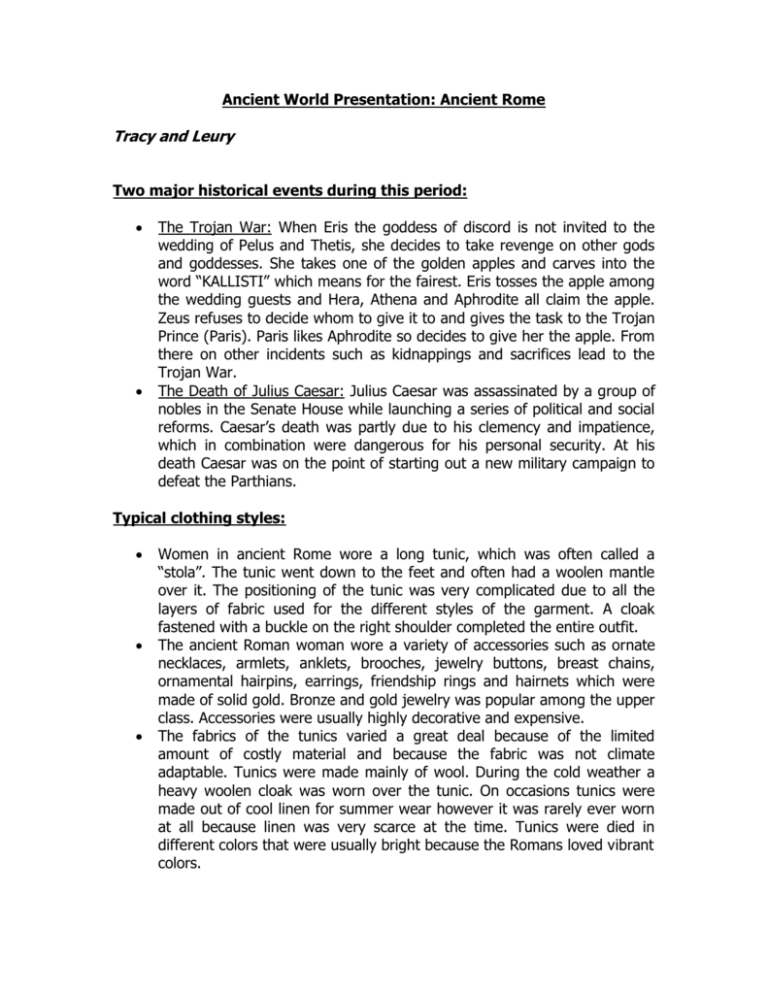
Ancient World Presentation: Ancient Rome Tracy and Leury Two major historical events during this period: The Trojan War: When Eris the goddess of discord is not invited to the wedding of Pelus and Thetis, she decides to take revenge on other gods and goddesses. She takes one of the golden apples and carves into the word “KALLISTI” which means for the fairest. Eris tosses the apple among the wedding guests and Hera, Athena and Aphrodite all claim the apple. Zeus refuses to decide whom to give it to and gives the task to the Trojan Prince (Paris). Paris likes Aphrodite so decides to give her the apple. From there on other incidents such as kidnappings and sacrifices lead to the Trojan War. The Death of Julius Caesar: Julius Caesar was assassinated by a group of nobles in the Senate House while launching a series of political and social reforms. Caesar’s death was partly due to his clemency and impatience, which in combination were dangerous for his personal security. At his death Caesar was on the point of starting out a new military campaign to defeat the Parthians. Typical clothing styles: Women in ancient Rome wore a long tunic, which was often called a “stola”. The tunic went down to the feet and often had a woolen mantle over it. The positioning of the tunic was very complicated due to all the layers of fabric used for the different styles of the garment. A cloak fastened with a buckle on the right shoulder completed the entire outfit. The ancient Roman woman wore a variety of accessories such as ornate necklaces, armlets, anklets, brooches, jewelry buttons, breast chains, ornamental hairpins, earrings, friendship rings and hairnets which were made of solid gold. Bronze and gold jewelry was popular among the upper class. Accessories were usually highly decorative and expensive. The fabrics of the tunics varied a great deal because of the limited amount of costly material and because the fabric was not climate adaptable. Tunics were made mainly of wool. During the cold weather a heavy woolen cloak was worn over the tunic. On occasions tunics were made out of cool linen for summer wear however it was rarely ever worn at all because linen was very scarce at the time. Tunics were died in different colors that were usually bright because the Romans loved vibrant colors. Social issues that relate to dress styles: Roman dress style differed from one class to another. The tunic worn by the common people, and slaves was made from a coarse dark material. The tunics worn by the patricians were made from a white wool or linen. The tunics worn by the magistrates were called the tunic agusticlavia and the tunics wore by the senators which had broad strips across it was called the tunica laticlavia. Children wore tunics with wide sleeves, children of the upper classes wore a tunic with narrow strips across until the age of 16 when they were replaced with a simple white tunic. Military tunics were usually much shorter than those worn by the civilians. Romans could tell how important or wealthy a person was from the toga they were wearing. The toga was made from white wool or white Egyptian linen. It was either cut squared or rectangular and it was worn draped around the body. Footwear was also something that defined a person’s position in society. Women wore closed shoes that were white, green or yellow. Men wore sandals. Patricians wore red sandals, which had an ornament in the back. Senators wore brown footwear with black straps, which were tied around the leg to the mid calf. Consuls wore white shoes and the soldiers white heavy boots. Today’s fashion inspired by Ancient Rome: The tunic from the ancient Roman woman is similar to that of the bridal gown used today. The Roman bride wore a straight decorated tunic with ribbons and jewelry. The tunic was woven in one piece which was long enough to reach the feet and she also wore a belt around the wait which symbolized Hercules the guardian of wedded life”. The upper class weddings the bride wore a flame colored veil over her bridal tunic. Some tunics had pearls embroidered throughout the gown, which were very similar to the gown worn today. The veil was topped with flowers that the bride had to gather herself before the ceremony. Romans developed colored stones such as topaz, emeralds, rubies and sapphires like the ones used today mostly by the upper class. The men to hide their baldness wore wigs. Fashionable women wore hairpieces, which were often made from the hair of slave girls. Women also wore chalk powder, charcoal and saffron as cosmetics and men trimmed their beards just like today.
